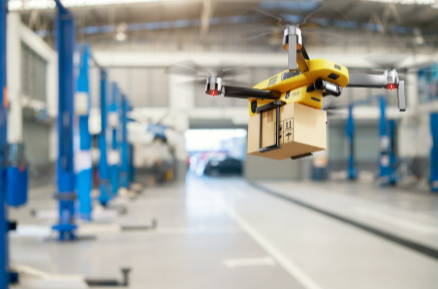The Future of Autonomous Robots in Logistics
The logistics sector stands on the brink of a significant transformation through the integration of autonomous robots. These systems promise to enhance operational efficiency while reducing costs. However, the adoption of such technology presents unique challenges, particularly concerning workforce adaptation and regulatory compliance. As companies explore these dynamics, the implications for supply chain management and customer satisfaction become increasingly vital. What strategies will emerge to harness the full potential of autonomous robotics?
The Role of Autonomous Robots in Supply Chain Management
As supply chains become increasingly complex and demand for efficiency rises, autonomous robots play a pivotal role in transforming logistics operations.
Their ability to collaborate seamlessly with human workers enhances inventory management processes, optimizing stock levels and reducing errors.
Benefits of Implementing Robotics in Logistics
Implementing robotics in logistics offers a multitude of benefits that significantly enhance operational efficiency and accuracy.
By automating repetitive tasks, companies can achieve substantial cost savings while minimizing human error.
Furthermore, robotics streamline inventory management and order fulfillment processes, leading to faster delivery times.
This integration allows organizations to allocate resources more effectively, ultimately fostering a more agile and responsive supply chain.
Read more: How Virtual Reality Is Changing Real Estate Tours
Challenges and Limitations of Autonomous Systems
While the advantages of autonomous systems in logistics are compelling, several challenges and limitations must be addressed to realize their full potential.
Key issues include technology integration complexities, which can hinder efficiency, and safety concerns that raise potential liabilities.
Additionally, regulatory hurdles often impede deployment, while the workforce impact raises ethical questions regarding job displacement and the need for reskilling, necessitating careful consideration and strategic planning.
The Future Landscape of Robotics in the Logistics Industry
The ongoing development of autonomous robots is poised to significantly reshape the logistics industry, addressing many of the challenges previously identified.
As robotic innovations advance, logistics automation will enhance efficiency, reduce operational costs, and improve safety.
The integration of these technologies will empower organizations to optimize supply chain processes, ultimately allowing for greater flexibility and responsiveness in the ever-evolving landscape of logistics.
Conclusion
In conclusion, the integration of autonomous robots in logistics signifies a pivotal shift towards enhanced operational efficiency and cost reduction. According to recent studies, companies that adopt robotics can expect a 20-30% increase in productivity within the first year of implementation. This statistic underscores the transformative potential of these technologies, as they not only optimize supply chain management but also pave the way for a more agile and responsive logistics landscape, ultimately elevating customer satisfaction and industry standards.




